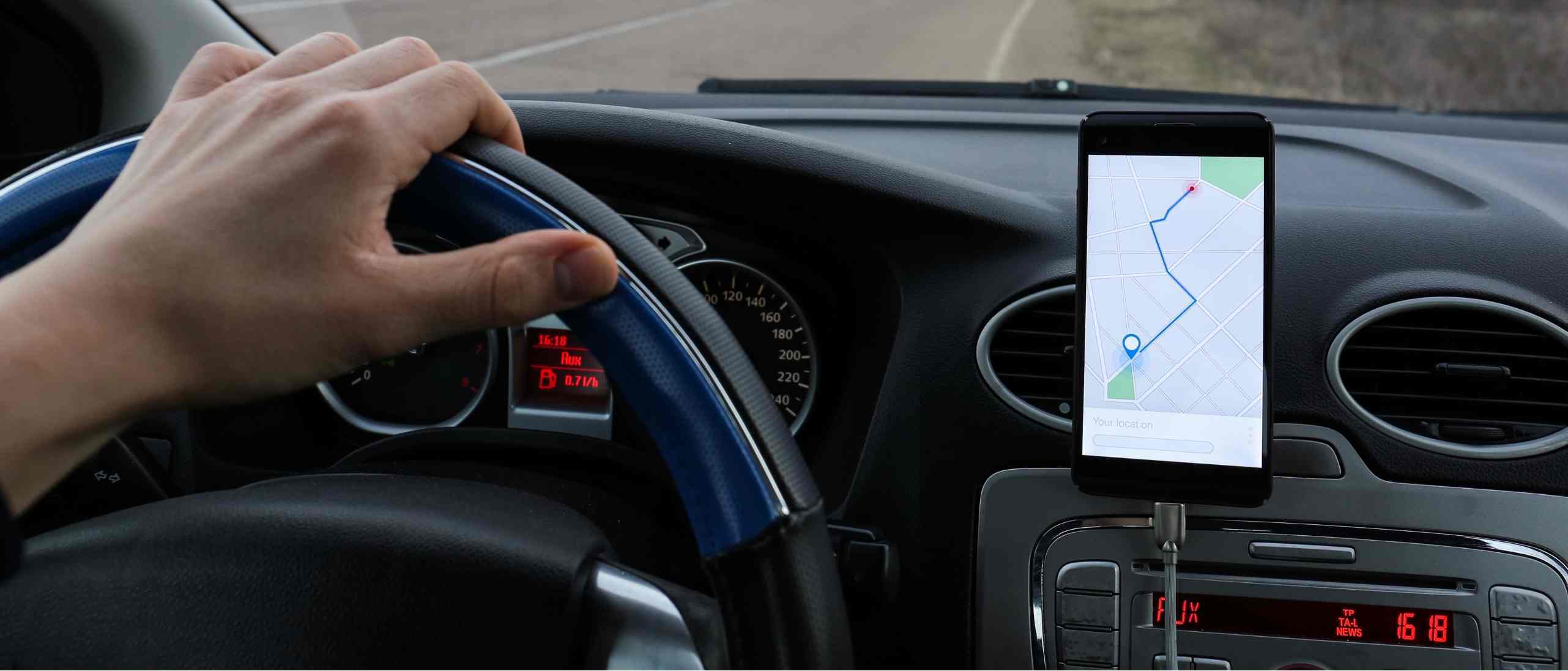Taxi Apps in Saudi Arabia | A Guide for Taxi Business Owners
Taxi apps are changing the way people get around in Saudi Arabia. Today, more riders use their phones to book taxis instead of calling a dispatcher.
Ebenezer Jose
Mar 20, 2025In recent years, the emergence of taxi apps has revolutionized the transportation industry, offering convenient and efficient ride-hailing services. These innovative platforms connect passengers with nearby drivers through user-friendly mobile applications, transforming the traditional taxi experience.
In this blog, we will delve into the technical architecture and inner workings of taxi apps, highlighting their benefits and exploring the future of ride-hailing technology.

Taxi apps, also known as ride-hailing apps, have transformed the way people commute by providing convenient and efficient transportation services. These digital platforms connect passengers with nearby drivers through user-friendly mobile applications, revolutionizing the traditional taxi experience. By leveraging the power of smartphones and GPS technology, taxi apps offer a range of features that enhance the overall ride-hailing process.
Taxi apps are innovative platforms that seamlessly connect passengers with drivers through the use of mobile applications. These apps allow users to book rides, track their drivers in real-time, make cashless payments, and provide feedback on their experience. By eliminating the need for traditional street hailing or calling dispatch centers, taxi apps provide a more convenient and streamlined way to request transportation services.
The ride-hailing market is dominated by several key players that have achieved global recognition. Companies such as Uber, Lyft, Didi, and Grab have established themselves as leading providers of ride-hailing services. These companies have not only transformed the way we commute but have also ignited a wave of innovation and competition within the transportation industry.
To provide seamless and efficient ride-hailing services, taxi apps rely on a complex technical architecture that combines user-facing components, driver-facing components, and a robust backend infrastructure. Understanding the technical aspects of these apps is crucial to appreciate their functionality and the benefits they offer to both passengers and drivers.
User-facing components are the features and interfaces that passengers interact with when using a taxi app. These components ensure a smooth and user-friendly experience throughout the booking and ride process. Some key user-facing components include:
Passengers are required to create an account within the app by providing their personal information, contact details, and preferred payment methods. This registration process allows for personalized service and convenient access to ride-hailing features.
The ride booking interface within the app allows passengers to input their desired pickup and drop-off locations, select the type of vehicle they prefer, and even schedule rides in advance. This user-friendly interface ensures a smooth booking process and provides passengers with the flexibility to customize their ride preferences.

Driver-facing components are the features and interfaces that drivers interact with when using a taxi app. These components streamline the operations for drivers, enabling them to efficiently manage ride requests and provide a high level of service. Some key driver-facing components include:
Prospective drivers undergo a registration process that involves submitting their personal information, driver's license details, and vehicle documentation. Ride-hailing companies perform comprehensive background checks and verification procedures to ensure passenger safety and maintain service quality.
Once registered, drivers can indicate their availability within the app. They receive ride requests from nearby passengers and have the flexibility to accept or decline based on their availability and proximity. This feature allows drivers to efficiently manage their time and optimize their earnings.

The backend infrastructure of taxi apps is responsible for handling the complexities of managing users, drivers, and rides. It involves databases, servers, and algorithms that work together to provide a seamless experience for all parties involved. Some key elements of the backend infrastructure include:
The backend of taxi apps stores and manages vast amounts of data, including user profiles, driver information, payment details, and ride history. This information is securely stored and easily accessible for smooth service delivery.
To facilitate cashless transactions, taxi apps integrate secure payment gateways. These gateways encrypt sensitive financial information, ensuring secure and reliable transactions for both passengers and drivers. Implementing robust security measures protects user data and builds trust in the platform.
A key technological component of taxi apps is GPS (Global Positioning System) technology, which enables real-time tracking and accurate navigation. Here's how it works:
Taxi apps leverage GPS technology to track the location of drivers and passengers in real time. This information allows the app to match passengers with nearby drivers efficiently and provide accurate estimated time of arrival (ETA) estimates.
Accurate location data plays a crucial role in enhancing the overall ride-hailing experience. It helps minimize pickup times, optimize routes, and ensure drivers can easily locate passengers. Moreover, accurate location tracking increases passenger safety and provides a reliable means of monitoring and sharing trip details with trusted contacts.
The ride-hailing process involves several steps that seamlessly connect passengers with drivers. Here's an overview:
When a passenger needs a ride, they open the taxi app and provide their pickup location. The app's algorithm then matches the passenger with the nearest available driver based on factors such as proximity, driver ratings, and vehicle type. The matching process aims to ensure quick and efficient pickups for passengers while maximizing driver utilization.
Once a driver is assigned to a passenger, both parties can communicate through in-app messaging features. This communication allows passengers to convey any special instructions or updates to the driver, such as gate codes or meeting points. It also enables drivers to request clarifications or notify passengers of their arrival.
Taxi apps employ dynamic pricing models based on factors such as distance, duration, and demand. Passengers can view an estimated fare before confirming the ride. After the trip, the app calculates the actual fare based on the distance traveled and any applicable surge pricing. Payment is automatically deducted from the passenger's registered payment method, eliminating the need for cash transactions.
Final Thoughts
Taxi apps have transformed the way we travel, offering convenient, safe, and efficient ride-hailing services. By understanding the technical architecture and inner workings of these platforms, we can appreciate the power and convenience they bring to our daily lives. As ride-hailing technology continues to evolve, we can look forward to more advancements that will shape the future of transportation.
Blog

Taxi apps are changing the way people get around in Saudi Arabia. Today, more riders use their phones to book taxis instead of calling a dispatcher.
Ebenezer Jose
Mar 20, 2025
Starting a bike taxi business is a smart way to help people move around cities. Cities around the world are facing traffic jams and pollution.
Ebenezer Jose
Mar 15, 2025
Ever stood on the sidewalk, phone in hand, wondering if Uber or Bolt will get you home faster and cheaper? You’re not alone.
Ebenezer Jose
Mar 03, 2025